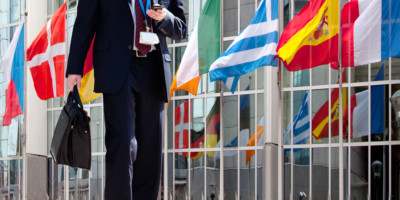-
Alemanha
National Trade Mark or EU Trade Mark?
23 Janeiro 2018
- Propriedade intelectual
- Marca registada e patentes
Talking to clients five years ago the trend was clear, application was to be filed for the EU Trademark only, as it was faster, broader, in relation to the geographical scope cheaper and easier to handle. However as we experience now the EU trade mark has some downsides for which reason it is advisable to apply for a national trademark alongside the EU trade mark. And these are the reasons why:
Genuine Use
One of the main risks with trade marks is the fact that they must be used five years after registration. That use however must be genuine. According to the ECJ (C 149/11) “there is ‘genuine use’ of a trade mark where the mark is used in accordance with its essential function, which is to guarantee the identity of the origin of the goods or services for which it is registered, in order to create or preserve an outlet for those goods or services; genuine use does not include token use for the sole purpose of preserving the rights conferred by the mark. When assessing whether use of the trade mark is genuine, regard must be had to all the facts and circumstances relevant to establishing whether there is real commercial exploitation of the mark in the course of trade, particularly the usages regarded as warranted in the economic sector concerned as a means of maintaining or creating market share for the goods or services protected by the mark, the nature of those goods or services, the characteristics of the market and the scale and frequency of use of the mark.“
The problem which occurs from time to time is whether a trade mark used only in one member state or in a specific part of that member state is to be regarded as genuine use in the meaning of these ECJ findings. Whilst the ECJ (C 149/11) has not denied genuine use because of a territorial restricted use within one member state per se it still has not excluded that possibility and what is more has even given the national courts the decision making authority to assess “whether the mark in question is used in accordance with its essential function and for the purpose of creating or maintaining market share for the goods or services protected.“ Consequently a French court could decide that a use of a mark in Germany is insufficient for upholding a EU trade mark and thereby decide that the mark has to be deregistered. This reason alone provides for the necessity to have a national trade mark as plan B.
Counterclaim
When the plaintiff’s trade mark is a German trade mark, there is no possibility for the defendant to raise a counterclaim calling for a revocation of that plaintiff’s trade mark. The defendant has to file for an additional cancellation order before the German Patent and Trademark office. That additional cancellation proceeding however in general does not even bar the violation proceedings. So these will often be decided long before the cancellation proceedings in the last instance.
That is different when it comes to the EU trade mark. The EU trade mark can be declared void during (!) the violation proceedings by filing a counterclaim. Alternatively, the EU trade mark court hearing a counterclaim for revocation or for a declaration of invalidity may stay the proceedings on application by the proprietor of the EU trade mark and after hearing the other parties and may request the defendant to submit an application for revocation or for a declaration of invalidity to the Office. With the consequences that the violation proceeding is dead for ten years which it takes to pursue the cancellation proceedings through all instances.
Place of jurisdiction
The place of jurisdiction of a EU trade mark is limited to the place where the event which gave rise to the harm occurred (“Handlungsort”). The German trade mark however also provides for the place where the harm arose (‘Erfolgsort’) as place of jurisdiction. That however gives the plaintiff much more possibility to forum shop.
Statute of limitation
The EU trade mark does not provide a uniform statute of limitation. The ECJ (C 479/12) has decided that claims for injunctive reliefs become time-bared under the regulations of the national law. However in some case it can be very unclear which national law applies and therefore the same case can be seen differently in the different countries. When the plaintiff’s trade mark is a national trade mark the scope of application of the national statutes of limitation is clear and there are no further insecurities which are never to relish when have court proceedings.
The author of this post is Ilja Czernik.


























